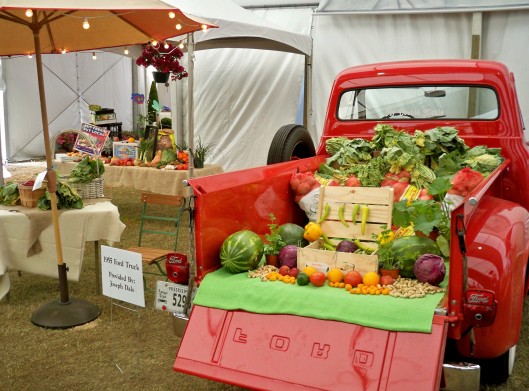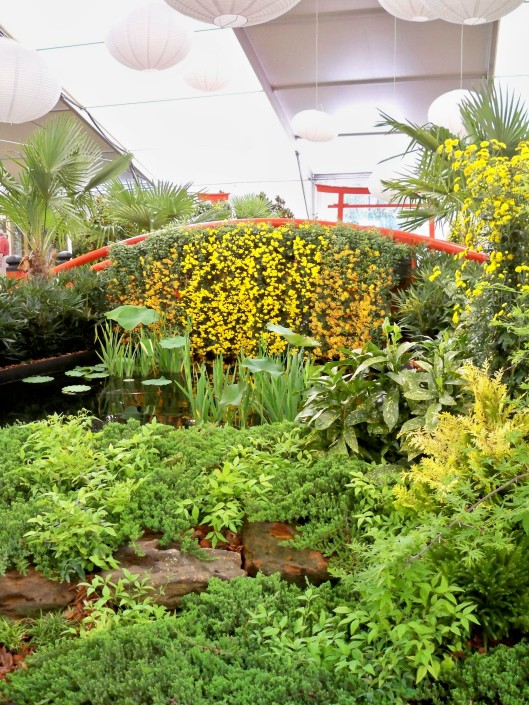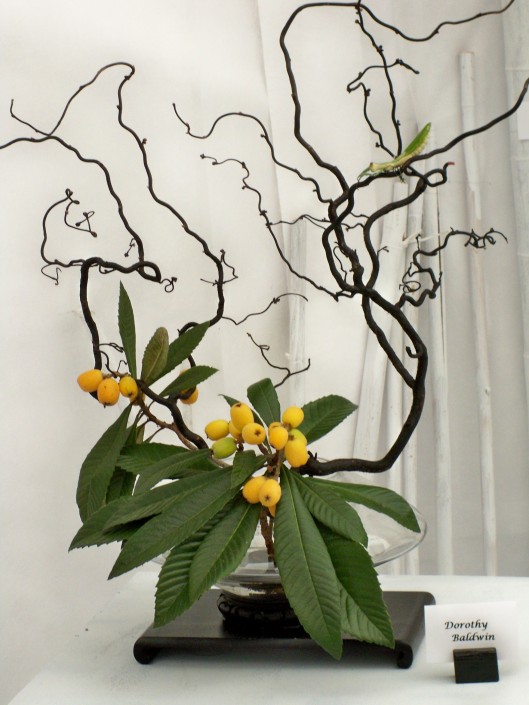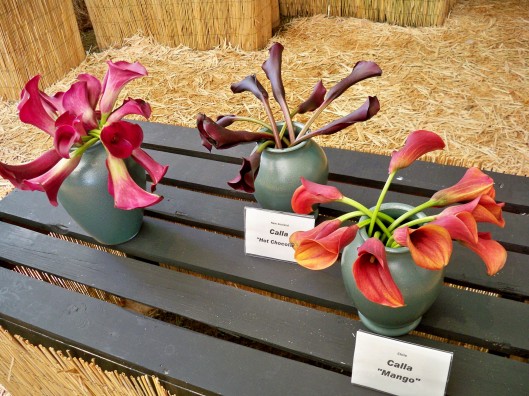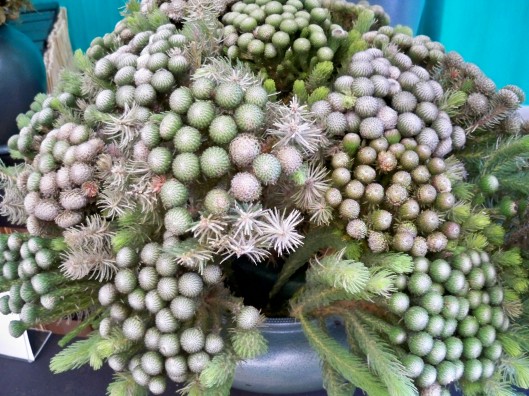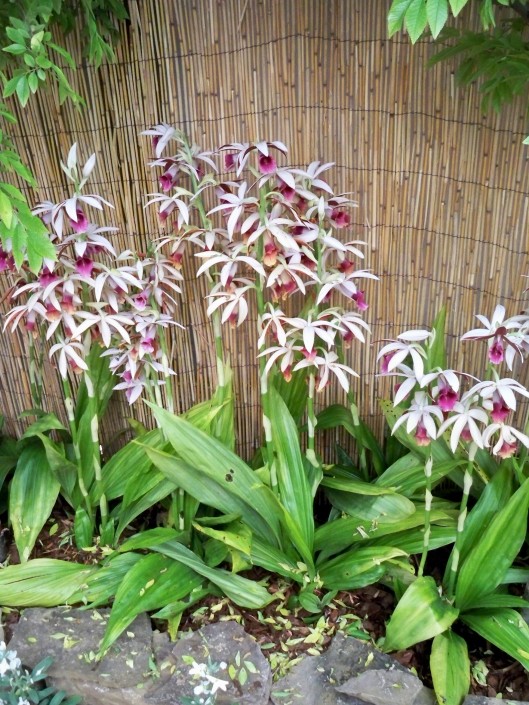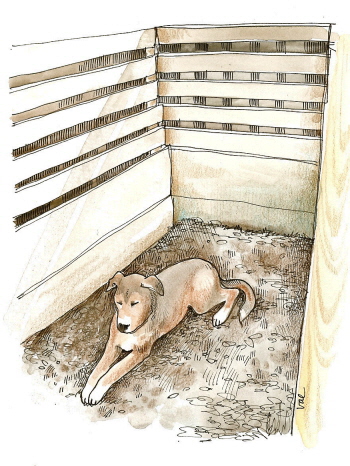 Ahhh… Cooler temperatures are finally here, and the front-yard garden is thriving in the absence of oppressive heat and hungry insects. Broccoli and cabbages line the front walk, hemmed with a few multiplier onions and some sprawling purple petunias at one end. This bed was created in a single early October afternoon, by double-digging the existing topsoil with a spade and then hoeing in a two-inch layer of clean, crumbly black mushroom compost. (I use mushroom compost because human sewage sludge — delicately referred to as “biosolids” in the federal regulations that allow it to be lumped in as compost and sold to unsuspecting gardeners — is frequently lurking in commercial bagged manure products. Ewwww.)
Ahhh… Cooler temperatures are finally here, and the front-yard garden is thriving in the absence of oppressive heat and hungry insects. Broccoli and cabbages line the front walk, hemmed with a few multiplier onions and some sprawling purple petunias at one end. This bed was created in a single early October afternoon, by double-digging the existing topsoil with a spade and then hoeing in a two-inch layer of clean, crumbly black mushroom compost. (I use mushroom compost because human sewage sludge — delicately referred to as “biosolids” in the federal regulations that allow it to be lumped in as compost and sold to unsuspecting gardeners — is frequently lurking in commercial bagged manure products. Ewwww.)
At the far end, some Brussels sprouts snuggle up to a row of romaine lettuce. Next week, when the romaine is harvested, I’ll fill in their little slice of real estate with some yellow globe onions. After several years of large-scale gardening, I really love working on a more intimate scale… planting and transplanting just a few square feet at a time provides a constant parade of assorted produce. I probably need to exercise more self-control in this area, though. Does anyone really need nine varieties of lettuce? Salads, anyone?
 Some of the aforementioned lettuces are in the “baby bed” next to the driveway. I set out seedlings very close together and they grew in a leafy mound that can be gradually eaten as the baby lettuces are thinned out, allowing the remaining plants to reach full size. These little fellows are Tango Early Oakleaf, Lolla Rosa and Red Sails, all from Good Scents Herbs and Flowers in Robertsdale, Alabama. In other beds are Deer Tongue, Arugula and Tom Thumb.
Some of the aforementioned lettuces are in the “baby bed” next to the driveway. I set out seedlings very close together and they grew in a leafy mound that can be gradually eaten as the baby lettuces are thinned out, allowing the remaining plants to reach full size. These little fellows are Tango Early Oakleaf, Lolla Rosa and Red Sails, all from Good Scents Herbs and Flowers in Robertsdale, Alabama. In other beds are Deer Tongue, Arugula and Tom Thumb.
Gypsy sweet peppers, Buttercrunch lettuce, more Oakleaf, onions and giant mutant basil share one raised bed. Each bed is 4×4 and 10 inches high, filled with equal parts peat moss, mushroom compost and vermiculite. I use pine needles for mulch. Thanks to a trio of towering longleaf pines overhanging the yard, mulch falls conveniently out of the sky every day.
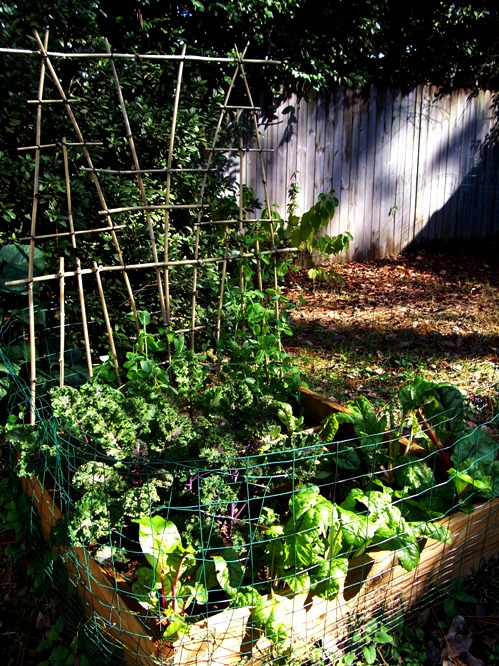 Meanwhile, the newer raised bed is home to Red Bor kale, Swiss chard, and some upwardly mobile heirloom snap peas on a scrounged-bamboo-and-Zip-tie trellis.
Meanwhile, the newer raised bed is home to Red Bor kale, Swiss chard, and some upwardly mobile heirloom snap peas on a scrounged-bamboo-and-Zip-tie trellis.
 My backyard is small, and only a few precious spots receive the full sun that herb plants crave. Some of the sunniest real estate is a skinny strip against the south side of a storage shed. The peppermint in the background, doing its level best to climb out of a wooden crate, sprouted from a single cutting in August.
My backyard is small, and only a few precious spots receive the full sun that herb plants crave. Some of the sunniest real estate is a skinny strip against the south side of a storage shed. The peppermint in the background, doing its level best to climb out of a wooden crate, sprouted from a single cutting in August.
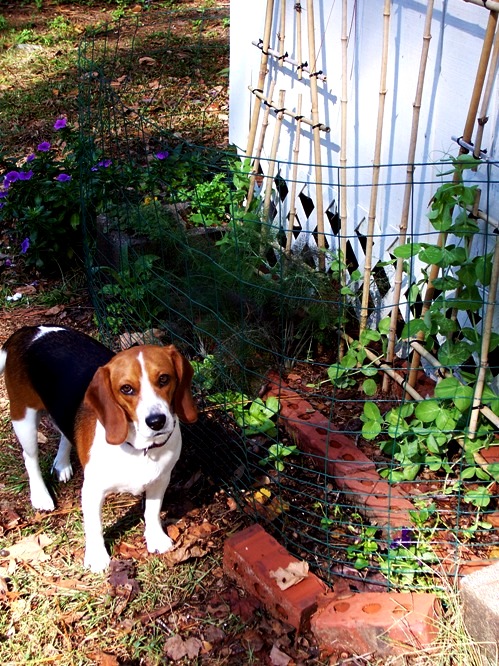 A pocket garden at one end of the shed has snap peas, bulb fennel, cardoon and a few leftover lettuces. And that protective fence embracing all the backyard plantings — the hardware store refers to it as rabbit wire, but it’s beagle wire to me.
A pocket garden at one end of the shed has snap peas, bulb fennel, cardoon and a few leftover lettuces. And that protective fence embracing all the backyard plantings — the hardware store refers to it as rabbit wire, but it’s beagle wire to me.

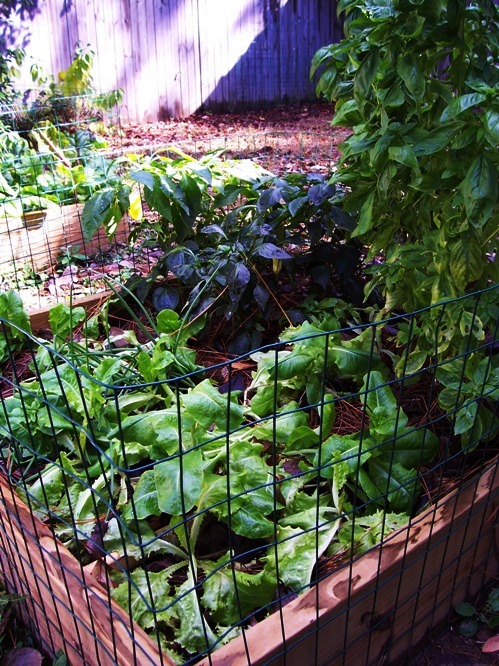
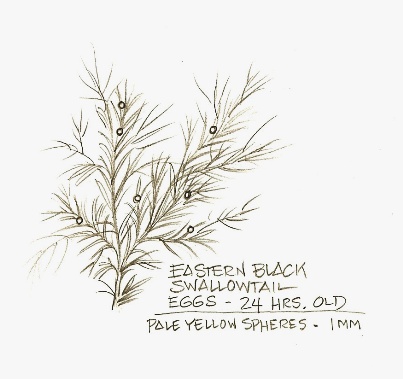 There was a beautiful Eastern Black Swallowtail in the fennel patch yesterday. This morning, the herb’s tender green shoots were peppered with tiny butterfly eggs. The little orbs are pale yellow now, but they will turn black just before they hatch into small caterpillars. In several stages, these fast-growing creatures will pass through increasingly vivid color patterns — all the while steadily consuming an impressive quantity of fennel, parsley and dill. Individuals lucky enough to avoid hungry wasps will eventually transform into a chrysalis and, finally, something that looks a lot like this:
There was a beautiful Eastern Black Swallowtail in the fennel patch yesterday. This morning, the herb’s tender green shoots were peppered with tiny butterfly eggs. The little orbs are pale yellow now, but they will turn black just before they hatch into small caterpillars. In several stages, these fast-growing creatures will pass through increasingly vivid color patterns — all the while steadily consuming an impressive quantity of fennel, parsley and dill. Individuals lucky enough to avoid hungry wasps will eventually transform into a chrysalis and, finally, something that looks a lot like this: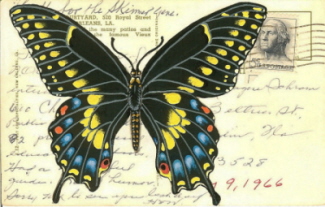 (c)2009 Val Webb
(c)2009 Val Webb

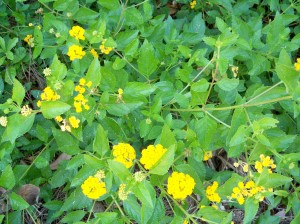

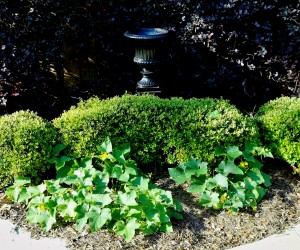
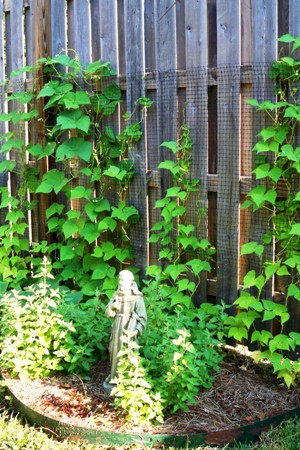

 This gardener took a break from tending his rattlesnake beans and tomatoes, and gave us a quick tour.
This gardener took a break from tending his rattlesnake beans and tomatoes, and gave us a quick tour.
 Some Florence fennel and a big ol’ rosemary.
Some Florence fennel and a big ol’ rosemary.
 Florida summers are hot, hot hot. The community garden at Aragon has a sprinkler system that comes on automatically, three times each week.
Florida summers are hot, hot hot. The community garden at Aragon has a sprinkler system that comes on automatically, three times each week.



